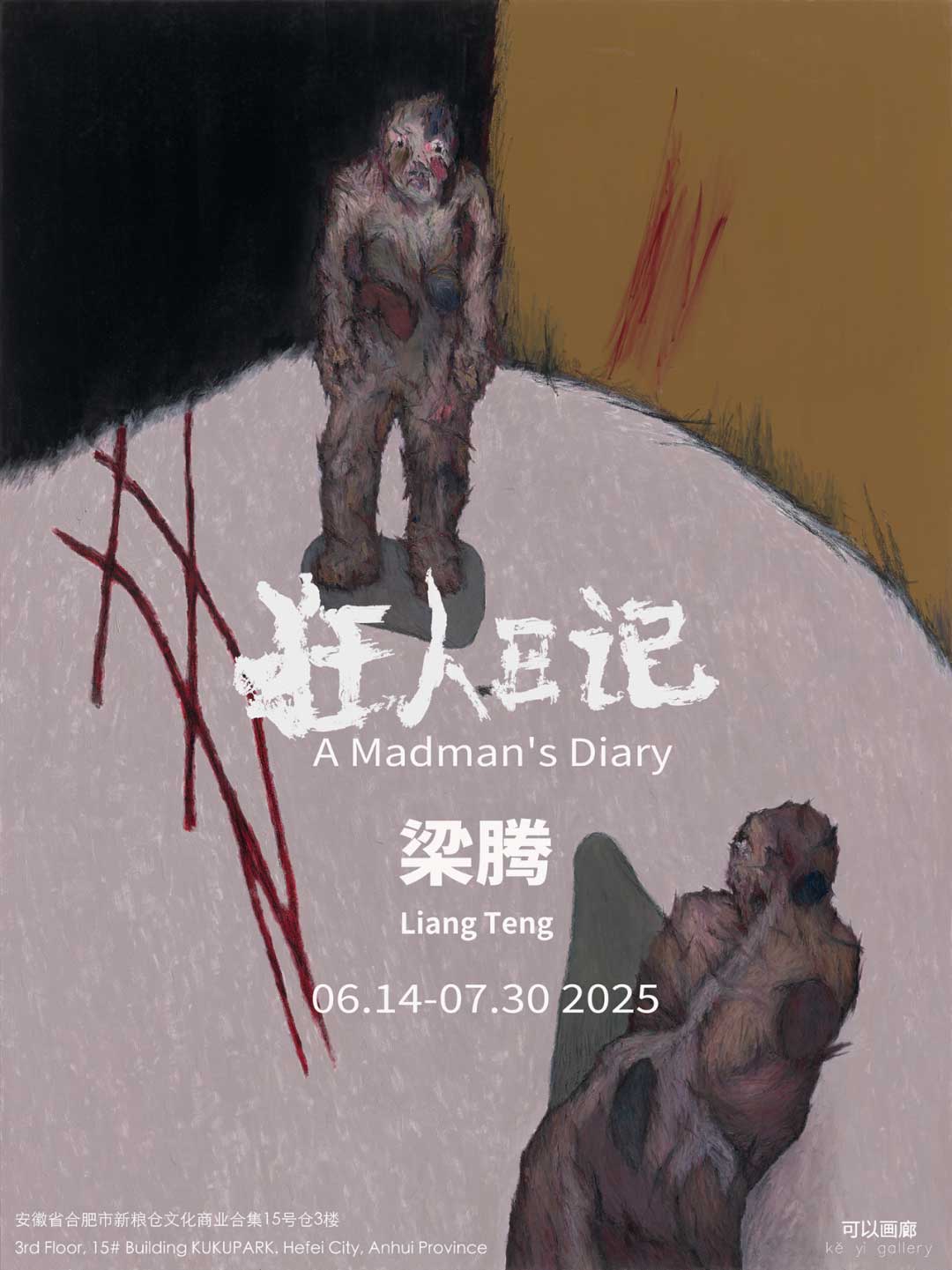KeYi Gallery is pleased to announce that we will hold a solo exhibition of Liang Teng titled "A Madman's Diary" at Hefei Space on June 14, 2025. This exhibition, as the artist's first solo gallery show, will present over twenty works created by him between 2023 and 2025. The extension will last until July 30th.
Lu Xun's "Diary of a Madman" reveals the "man-eating" nature of social discipline from the perspective of a madman. The name of this exhibition is also intended to pay tribute to this classic literature. The objects in "Diary of a Madman" not only serve as metaphors for the contemporary spirit but also reflect the complex influence of the process of civilization on human instincts: In an era when the regularized way of thinking is educated by social trends of thought as the underlying logic, the human subconscious is suffering mental pain in order to resist the oppression of instincts by such discipline - hedonism, vulgar tastes and consumer culture blend into a pathological and distorted social trend of thought and form a set of transformation mechanisms. The accessibility and unaccessibility of pleasure constitute a chaotic void. Impatient individuals rush into the trend of The Times and give up independent thinking, eventually becoming part of social production. The artist attempts to place the people of the era in a reality he has created, where their instincts are disciplined and oppressed, roaring and conflicting, yet powerless.
Liang Teng's work incorporates intense visual tension, blending Francis Bacon's visceral physicality into his paintings:figures stand upright, sit still, confront or fight fiercely in a spastic posture. The broken bodies are "mended" by rough color blocks and sharp lines, and then torn, forming a kind of spiritual confrontation or individual state.Liang Teng's work incorporates intense visual tension, blending Francis Bacon's visceral physicality into his paintings.
In addition to the spiritual analysis that focuses on the main character, the symbolic meaning of Liang Teng's single scene is also worth savoring: the shining gold bars are not only the embodiment of desire but also reflect the futility of material worship. The fence-like strip-like barriers imply the control of thoughts by rules and implicit transformation, creating a pulling force between seriousness and tension. When these works, which carry the metaphors of capital (gold bars), the transformation of rules (fences) and individual portraits, are presented together in this exhibition, viewers will directly confront the soul-stirring question: Under the scouring of the trend of social consciousness, are we aware that we are falling into the trap of this transformation mechanism? When indulging in the instinctive principle of pleasure alone, is there enough thought process to resist nothingness?

